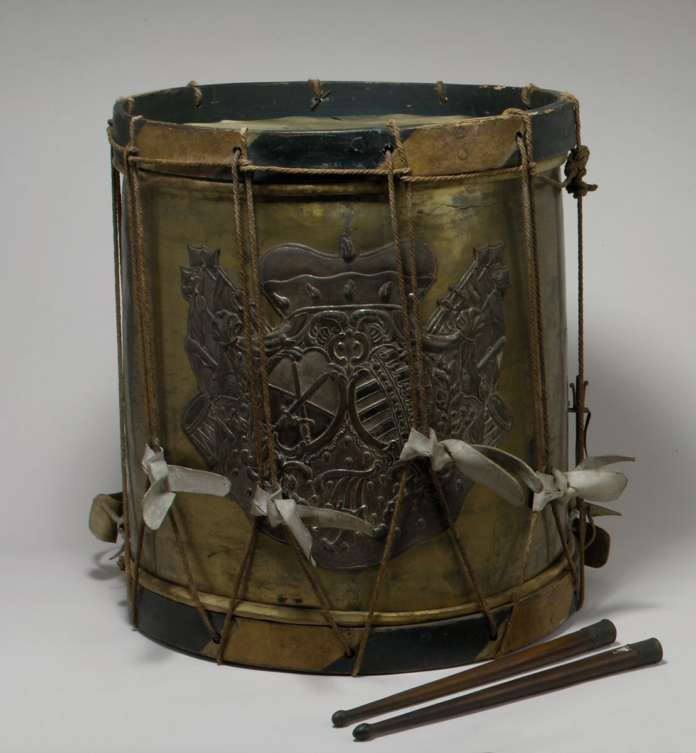Article Excerpt
European military instruments were brought to the New World and used in much the same way as they had been in the mother countries. As militias formed in the towns and villages of colonial America, drummers played an important role in summoning men from rural areas to take up arms. Revolutionary War drummers and fifers were used in battle to signal the soldiers to fire. In the hazy fog of battle, visual command was impossible and musical instruments were the only way to convey orders to the troops.
The combination of the fife and drum became known as military field music. By the time of the Civil War, each company had its own field musicians, one fifer and one drummer, to provide the daily signals telling the soldiers to wake up, eat, and go to bed. The drummers and fifers of a regiment gathered to create the larger drum and fife corps, which provided the cadences and signals for more formal occasions.
Analysis
A utilitarian use of music, mainly in this case to direct orders and keep clarity of orders/command, is something that’s been subtlety used throughout history. Although in the modern age, it might be harder to spot. When one hears a ding in front of the elevator, they expect the elevator to open shortly after. When schoolkids hear the sound of a school bell, they assume that class has ended. The assignment of signals to sound, or even to widen the concept of signals to senses, is something to consider when trying to design an intuitive user experience. Humans have certain dispositions to certain sounds, that we can use to clue people in on the functions and intended actions that need to be taken in certain situations.




